My all butter pie crust recipe is incredibly easy to make using only all-purpose flour, salt, butter, and ice water. It's flaky, flavorful, and perfect for sweet or savory pies, tarts, quiches, and more. Use it as your go-to homemade pie crust for any baking occasion.
See my tart recipes and holiday pie recipes for tasty ideas on how to use your homemade pie crust.

Jump to:
- 🥘 Ingredients
- 🥣 Best Type Of Flour For Making Pie Crusts
- 👩🏻🍳 How To Make A Perfect All-Butter Pie Crust
- 💭 Angela's Pro Tips & Recipe Notes
- 🥡 Storing
- 🥧 How to Blind Bake (Par-Bake) a Pie Crust
- 🤔 Troubleshooting Butter Pie Crusts
- ❓Should I Sift The Flour When Making Pie Crusts?
- ❓ Can I Make A Butter Pie Crust Without A Food Processor?
- ❓Can I Freeze Butter Pie Crust Dough?
- 📖 Recipe Card
- 💬 Comments & Reviews
An all-butter pie crust is perfect for both sweet and savory fillings, and can be used as the base crust for anything from fresh fruit tarts to quiche. This is one of those easy and reliable recipes I like to use over and over again.
🥘 Ingredients

- All-Purpose Flour - Measured using the spoon and level method.
- Salt - If using salted butter, you can reduce the added salt or omit it entirely.
- Butter - Two sticks of COLD, cubed butter. You can even briefly pop it into the freezer before using it. I always recommend using unsalted butter so you have full control over the salt content, especially in baking.
- Ice Water - You need the water to be ice cold, but don't add the ice to the food processor. You may not use it all.
- Cream of Tartar - My base all-butter pie crust recipe has evolved to include this as my go-to secret ingredient for a divine crust that no one leaves on the plate!
Be sure to see the free printable recipe card below for ingredients, exact amounts & instructions with tips!
🥣 Best Type Of Flour For Making Pie Crusts
A medium protein all-purpose flour works great for pie dough. If you have pastry flour available to you, it will work wonderfully as well. Pastry flour, as the name implies, is absolutely perfect for making pie crusts.
Pastry flour is on the low end of protein content, about 8-10%, but not as low as cake flour. Cake flour does not have enough protein to form a workable dough. It has a high starch content and will not absorb enough water to form a good pie crust.
On the opposite end of the spectrum, bread flour has a protein content that is too high. It will absorb too much water and make a pie crust that is tough and chewy.
👩🏻🍳 How To Make A Perfect All-Butter Pie Crust
Grab a food processor, a measuring cup, and some plastic wrap to get started. This recipe makes a double crust that works for 8 or 9-inch pie pans and baking dishes.
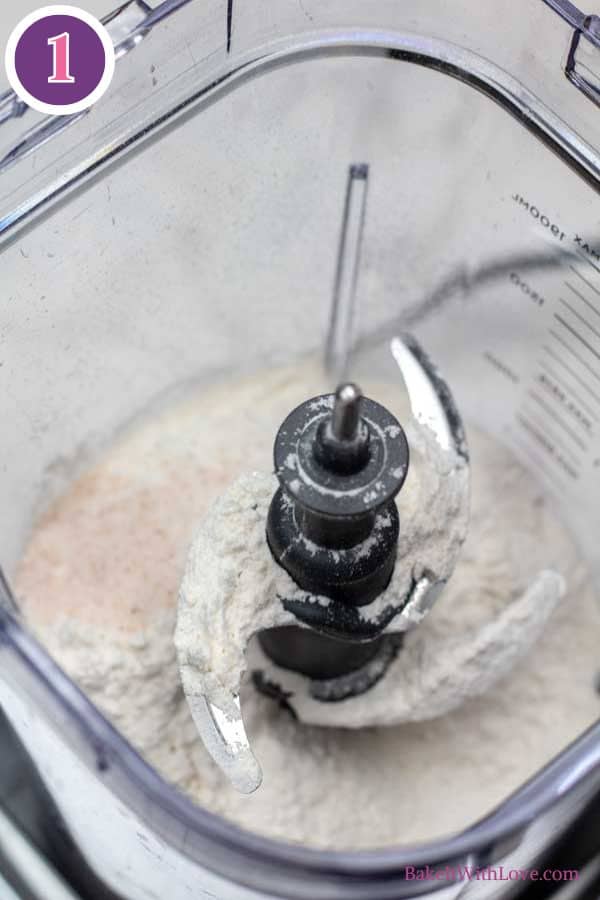
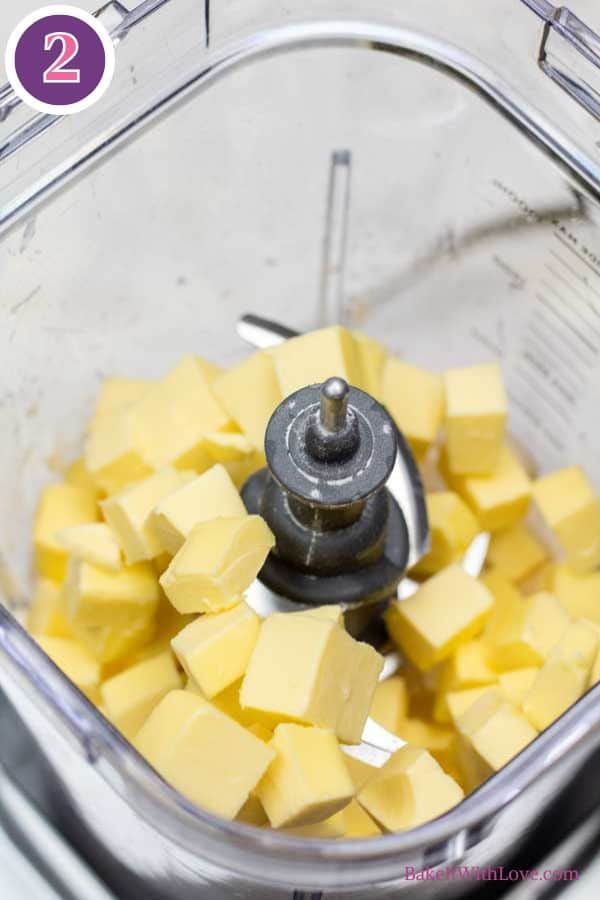
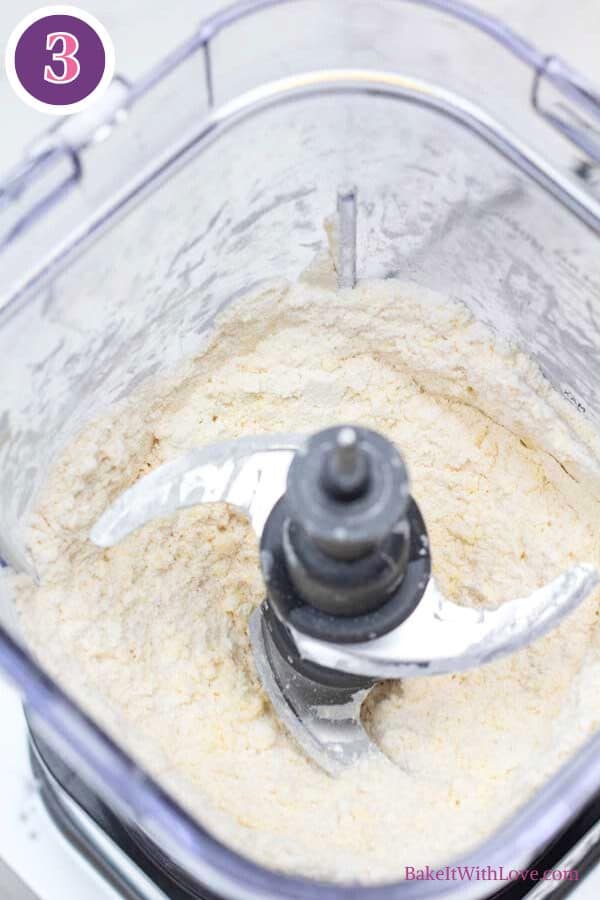
Step 1: Combine the flour and salt. In a food processor, add 2½ cups (300 grams) of flour and ½ teaspoon of salt, then pulse them together (photo 1).
Step 2: Pulse butter. Add 1 cup (227 grams) of cold butter (photo 2) and pulse in short bursts (photo 3) until the butter has broken down into pea-sized crumbles (photo 4). *Refrigerate your food processor bowl if needed to keep the butter cold while processing.
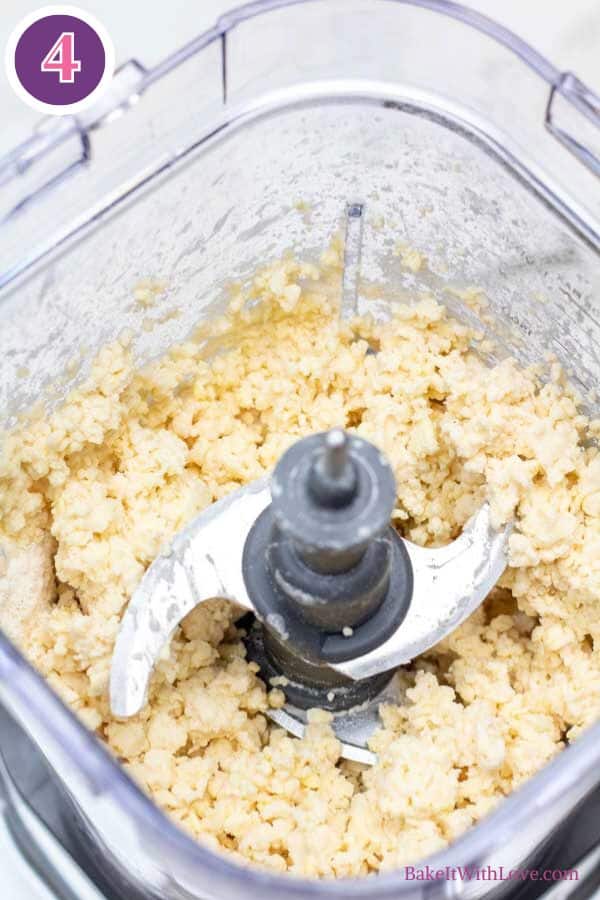
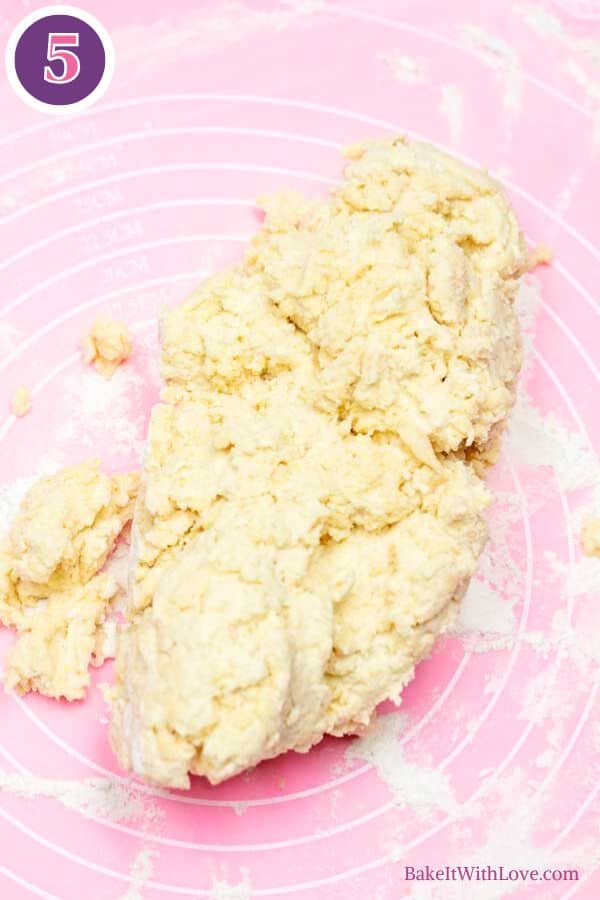
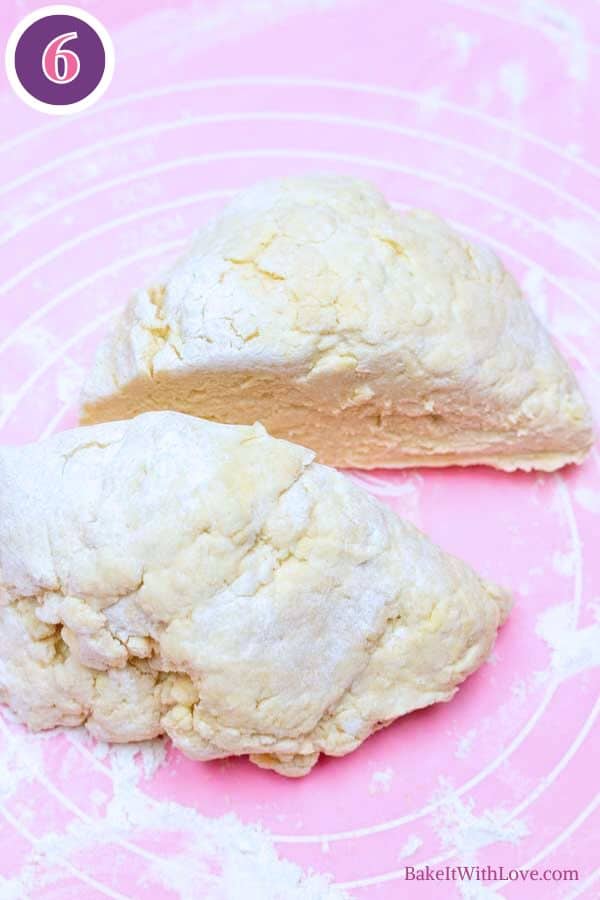
Step 3: Slowly incorporate water. Add the ½ cup (118 milliliters) of ice water slowly in small amounts of 1 tablespoon at a time while pulsing the food processor (only add in the water, not the ice). Continue until the mixture comes together as a dough; it should be moist, not soggy.
Step 3: Form into balls. Turn the dough out onto a lightly floured working surface (photo 5), divide it into two halves (photo 6), and form each half into a ball.
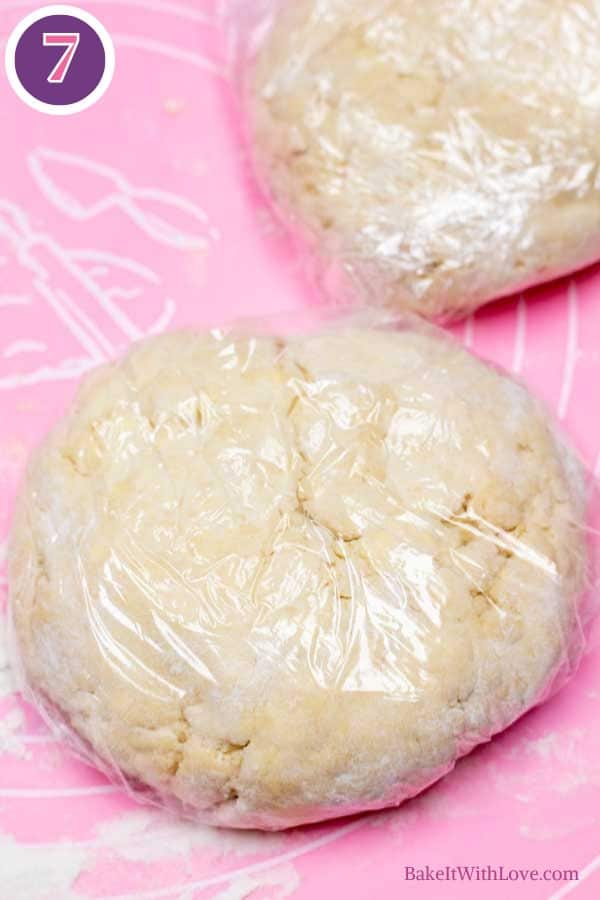
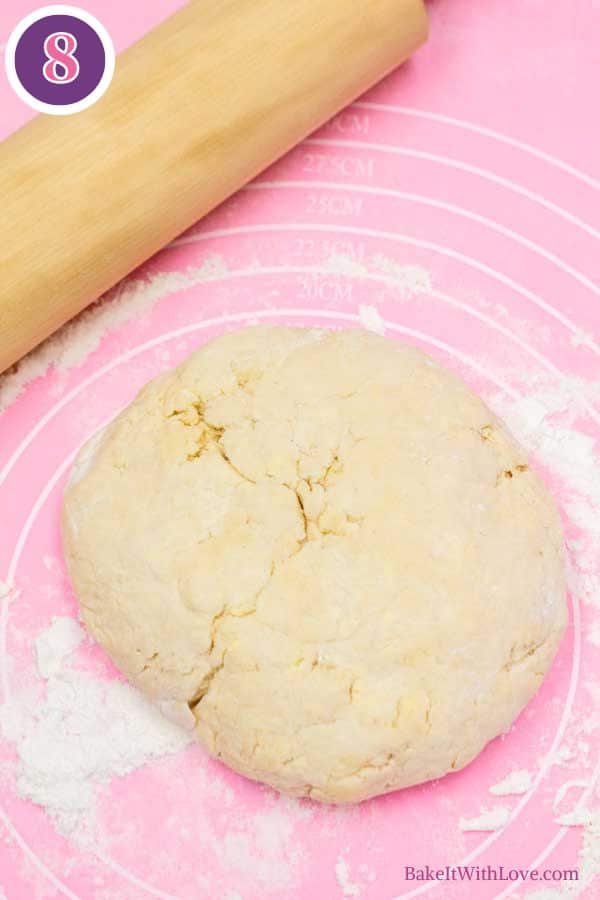
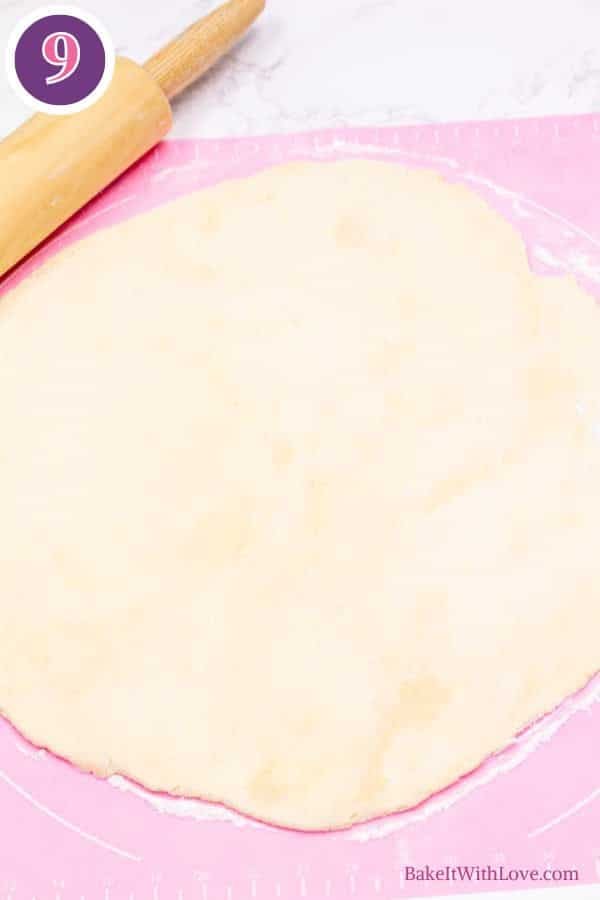
Step 4: Press and chill. Using your hands, lightly flatten the two dough balls into a disc shape and cover them with plastic cling film wrap (photo 7). Chill in the refrigerator for a minimum of 1 hour (and up to 2 days).
Step 5: Roll out the dough. When ready to use, unwrap the dough on a lightly floured work surface (photo 8). Then, roll it out to about ⅛-inch thick (photo 9).
Step 6: Transfer to a pie dish. Carefully transfer the rolled-out dough to your pie dish, gently pressing it into the bottom and sides. Trim any excess dough and crimp the edges as desired.
>>>See All Of My Tasty Recipes Here!<<<
💭 Angela's Pro Tips & Recipe Notes
- Measure out your ½ cup of cold water and add ice cubes first. Let the water chill in the refrigerator while you gather ingredients and set up your food processor (my recommended method, but this can be done by hand in a large mixing bowl and pastry cutter). Your cubed butter can also be placed in the freezer for about 15-30 minutes before being placed into your food processor.
- Add the cold water slowly. Use small, tablespoon-sized increments. It's easy to add more if you need it, but you can't take it out once it's in. You don't want wet or soggy dough.
- Don't skip out on chilling the dough. You'll need to place it in the refrigerator for a minimum of 1 hour before you start baking.
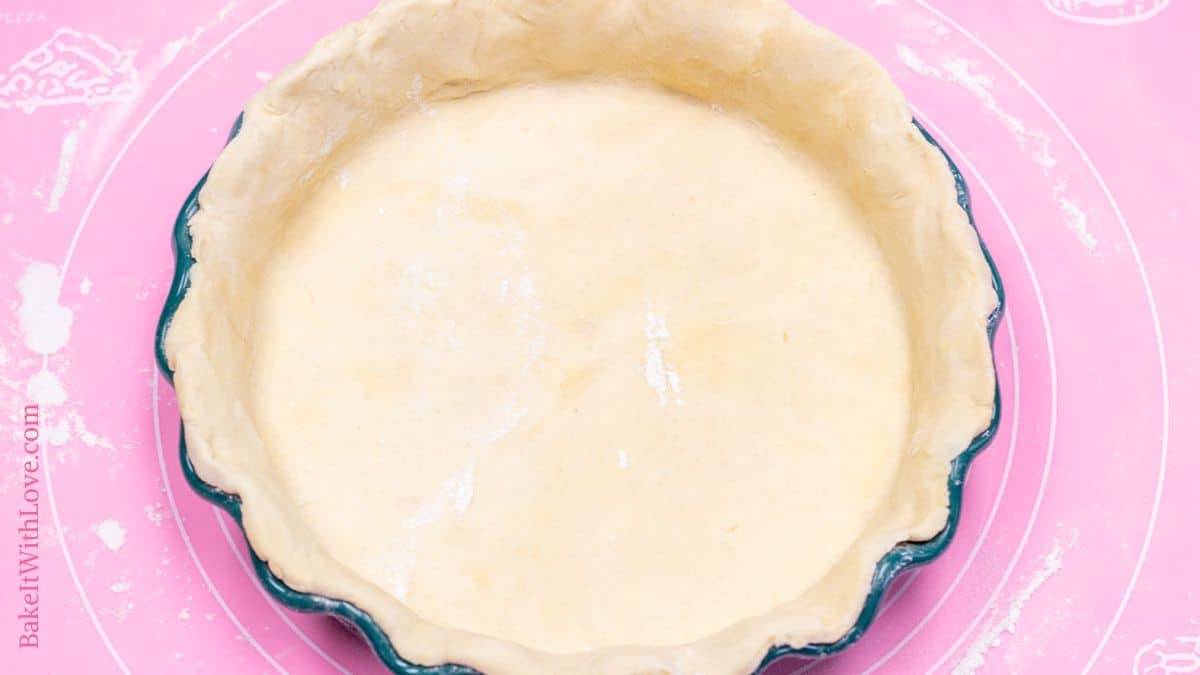
🥡 Storing
Keep your pie crust tightly wrapped in plastic wrap and stored in the refrigerator for up to 2 days before baking.
🥧 How to Blind Bake (Par-Bake) a Pie Crust
Some dessert recipes require a prebaked or par-baked pie crust, also called 'blind baking'. This technique is used for pies with custard fillings, cream pies, or any filling that doesn't bake for long.
Pre-Baking and Fully Baking Your Butter Pie Crust
Step 1: Chill the crust. After fitting the rolled dough into your pie plate and crimping the edges, refrigerate the crust for at least 30 minutes. This helps the crust hold its shape during baking.
Step 2: Preheat the oven. While the dough chills, preheat your oven to 375°F (190°C/Gas Mark 5) and position a rack in the lower-middle of the oven.
Step 3: Line and weigh down the crust. Line the crust with parchment paper or heavy-duty aluminum foil, pressing it into the corners and up the sides. Fill it with pie weights, dried beans, or uncooked rice. Make sure it's filled to the top to support the sides.
Step 4: Bake. Place the pie dish on a baking sheet and bake for 20 -25 minutes, or until the edges are set and just beginning to brown.
Step 5: Remove weights and prick with a fork. Carefully lift out the parchment or foil with the weights. Prick the bottom of the crust with a fork to prevent bubbling.
Step 6: Finish baking.
For a partially baked crust (used when the pie will be filled and baked again), return the crust to the oven and bake for another 5-7 minutes, until the bottom looks dry and lightly golden.
For a fully baked pie crust (used for no-bake fillings), bake for an additional 10 minutes or until the crust is evenly golden brown.
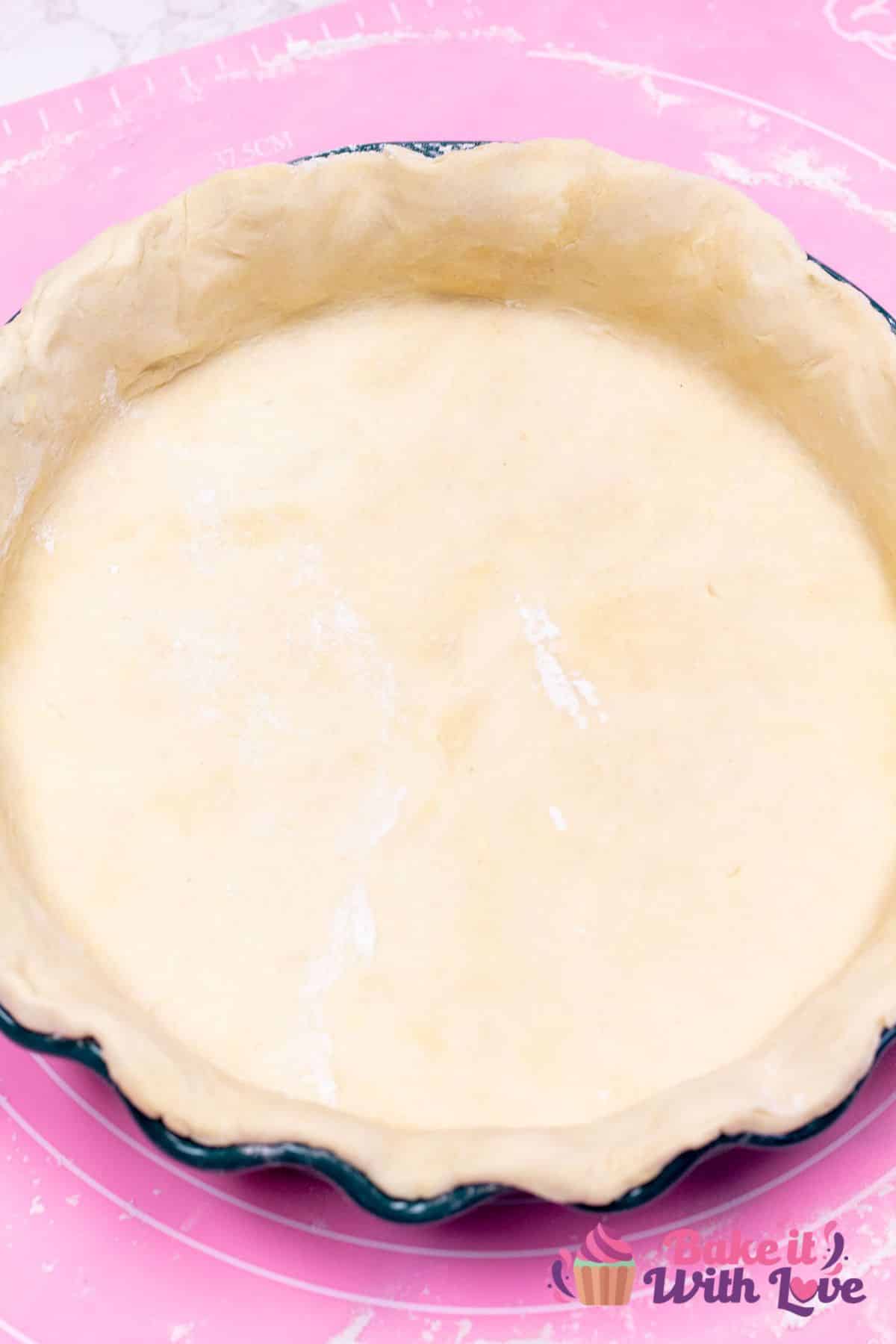
🤔 Troubleshooting Butter Pie Crusts
- Overworked dough. Kneading or mixing too much activates the gluten, which results in a tough, chewy crust instead of a tender, flaky one.
- Too much water. Excess water makes the dough heavy and sticky, producing a dense crust instead of a light, crisp one.
- Warm butter. If your butter isn't cold enough, it melts into the dough rather than creating the steam pockets that give pie crusts their flakiness.
- High-protein flour. Some brands of all-purpose flour are higher in protein, which can lead to a firmer, less delicate texture. If you're having issues, try using pastry flour for a softer bite.
As with all things baking, you'll learn what consistency you want in your dough after a try or two. If you fail, serve it up with whipped cream or ice cream, and try again next time with a few small tweaks.
❓Should I Sift The Flour When Making Pie Crusts?
There is no need to sift your flour for pie crusts, especially when using a food processor. If you're making your pie crust by hand, whisk your dry ingredients together before adding the flour.
❓ Can I Make A Butter Pie Crust Without A Food Processor?
You can use your hands to knead the dough, but be quick and don't overwork it. Your hands are warm and will quickly heat the cold butter in the dough.
❓Can I Freeze Butter Pie Crust Dough?
Yes. Wrap the dough tightly in plastic wrap, then place it in a freezer-safe bag or container. It will keep for up to 3 months. When you're ready to use it, let the dough thaw in the refrigerator overnight. Once chilled but pliable, roll it out and proceed with your recipe as usual.
Do you love a recipe you tried? Please leave a 5-star 🌟rating in the recipe card below and/or a review in the comments section further down the page.
Stay in touch with me through social media @ Pinterest, Facebook, Instagram, or Twitter! Subscribe to the newsletter today (no spam, I promise)! Don't forget to tag me when you try one of my recipes!
📖 Recipe Card
Butter Pie Crust
Ingredients
- 2½ cups all-purpose flour
- ½ teaspoon salt
- ¼ teaspoon cream of tartar (optional but recommended)
- 1 cup butter (2 sticks or 16 tablespoons - cold, cubed - can be frozen briefly before using)
- ½ cup ice water
(Note: 2x or 3x only changes the ingredient list)
Instructions
- In a food processor, add the 2½ cups all-purpose flour, ½ teaspoon salt, and optional ¼ teaspoon cream of tartar, then pulse them together.
- Add 1 cup butter and pulse in short bursts until the butter has broken down into pea-sized crumbles. *Refrigerate your food processor bowl if needed to keep your butter cold while processing.
- Add the ½ cup ice water slowly in small amounts of 1 tablespoon at a time while pulsing the food processor until the mixture comes together as dough.
- Turn dough out onto a lightly floured working surface, divide it into two halves and form each half into a ball.
- Using your hands, flatten the two dough balls into a disc shape and cover with plastic cling film wrap.
- Chill in the refrigerator for a minimum of 1 hour (and up to 2 days).
Notes
- Measure ingredients first to speed the mixing process.
- Add the cold water slowly so you don't end up with soggy dough.
- Don't skip out on chilling the dough.


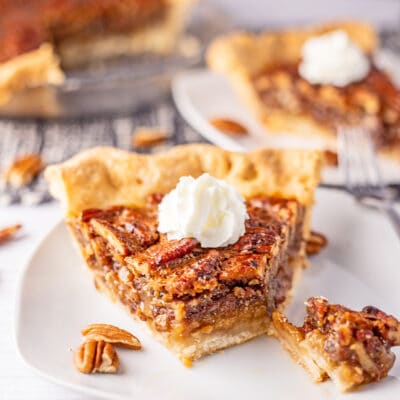
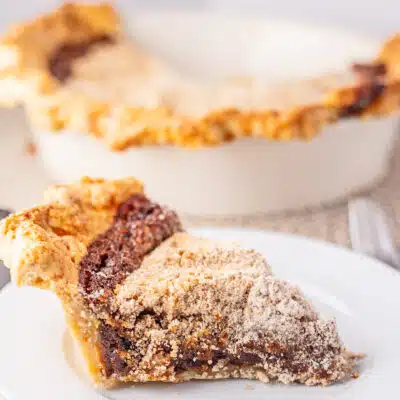

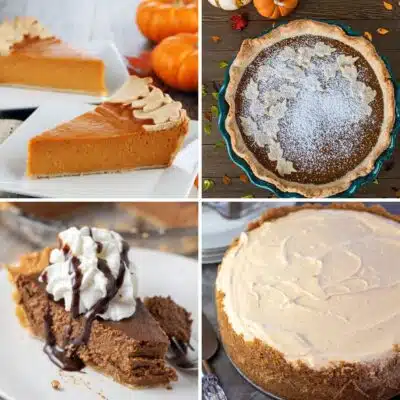
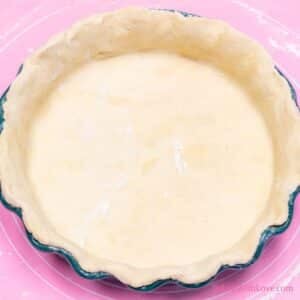


Anonymous says
Would like to try but you provide no directions on baking.
Angela Latimer says
It will depend on your recipe. Some may have you par-bake and others may not.
Anonymous says
Hey, I think you forgot to tell us how to bake the crust lol
Angela @ BakeItWithLove.com says
That will depend on your recipe instructions. Some will have you par-bake the crust, others you'll add the filling and bake from there.
nelly coronado says
se puede sustituir por masa de hojaldre ya lista para usar para la corteza?
English: Can it be substituted for ready-to-use puff pastry for the crust?
Angela @ BakeItWithLove.com says
Esta no es una masa de hojaldre, pero dependiendo de su receta, puede funcionar. Es una excelente corteza casera rápida y fácil que se puede usar con prácticamente cualquier cosa.
English: This is not a puff pastry crust, but depending on your recipe it may work. It's a great quick and easy homemade crust that can be used with practically anything.